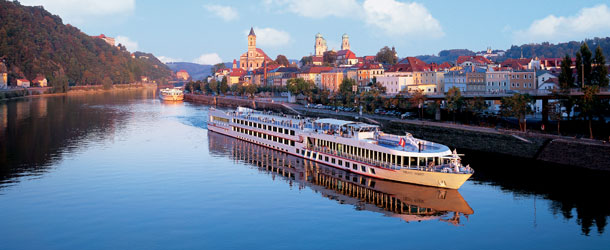Last year Viking River Cruises launched their new class of ship, and the new vessels have proven to be a huge success. The Viking Longships revolutionised the design of the fleet, offering unprecedented comfort and space as well as new technology to ensure the most environmentally-friendly river cruises possible.
It was back in 2009 with the launch of the Viking Legend that the cruise line began putting more of a focus on the latest green technologies, which were implemented again in 2011’s launch of the Viking Prestige. But it was in 2012, with the launch of the Viking Longships, that the cruise line moved forward to a complete new design.
It’s a design that’s proven so successful that Viking have stuck with it. The first wave of orders consisted of six ships, and 10 more are following this year with another 12 on order for 2014. The only deviation in the blueprints is for another two ships which will be built to slightly smaller specifications, to make them more suitable for the Douro River.

All of the Longships are named for a notable figure or character in Norse mythology, such as the Viking Aegir, the Viking Freya and the Viking Tor. The specifications were created in order to provide more space for guests, with full-size staterooms including many with balconies and better public spaces, including the Aquavit Terrace and Observatory Lounge.
The success of the Viking Longships may be contributing to the next venture of the cruise line as well, as it branches out with the new planned Viking Ocean Cruises. With four ocean cruise ships now on order and the first due to arrive in 2015, this new venture will take the essence of style and luxury that drives Viking River Cruises out to sea, creating a premium experience designed with the destination as the focal point.
It’s rare to see a ship design prove so successful that a cruise line decides to stick with it, but that’s what has happened with the Viking Longships for the river cruise market. It’s plain to see why, and any opportunity to sail one of the best rivers around the world on one of these vessels should be snapped up.
By Ian Lewis
Google



